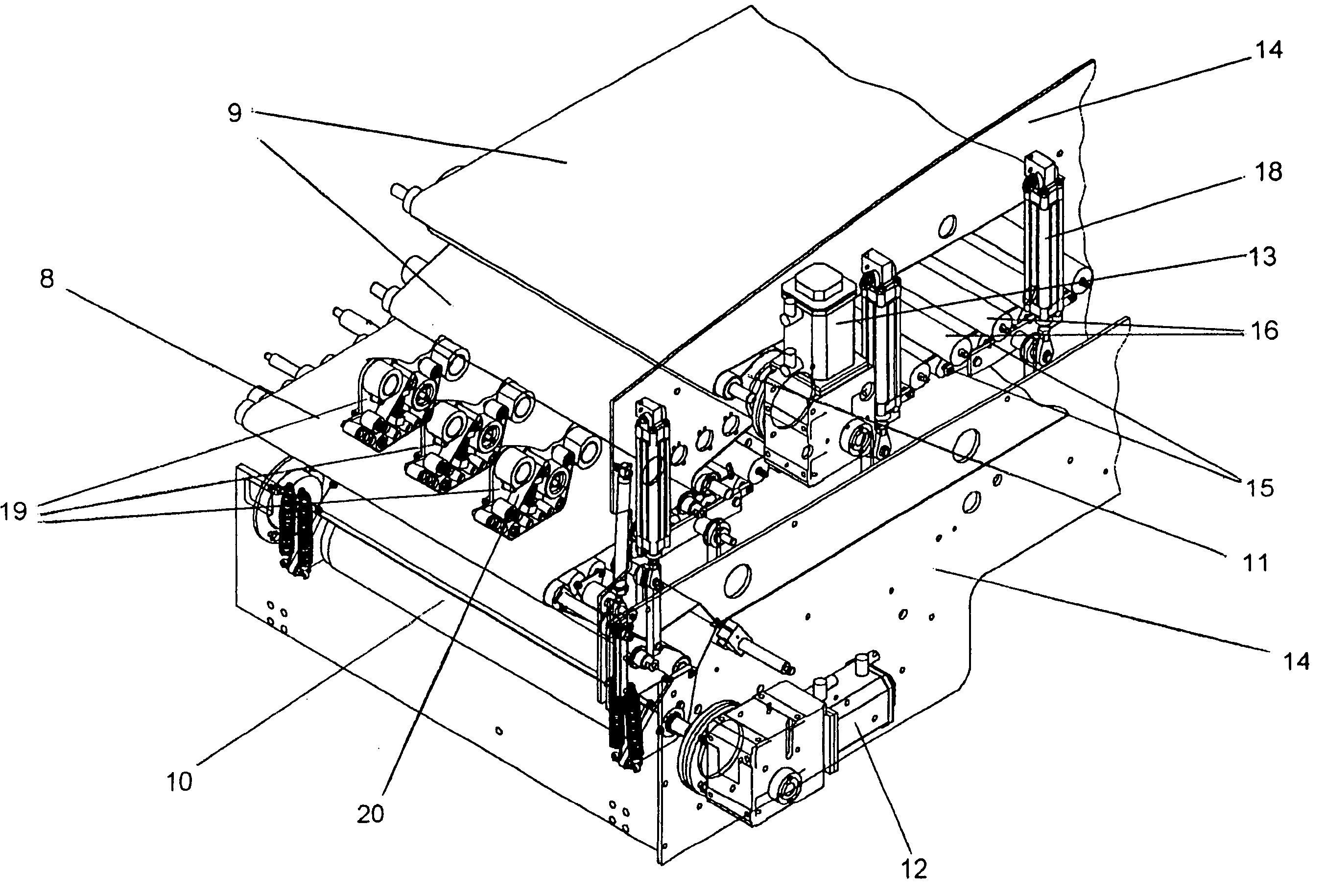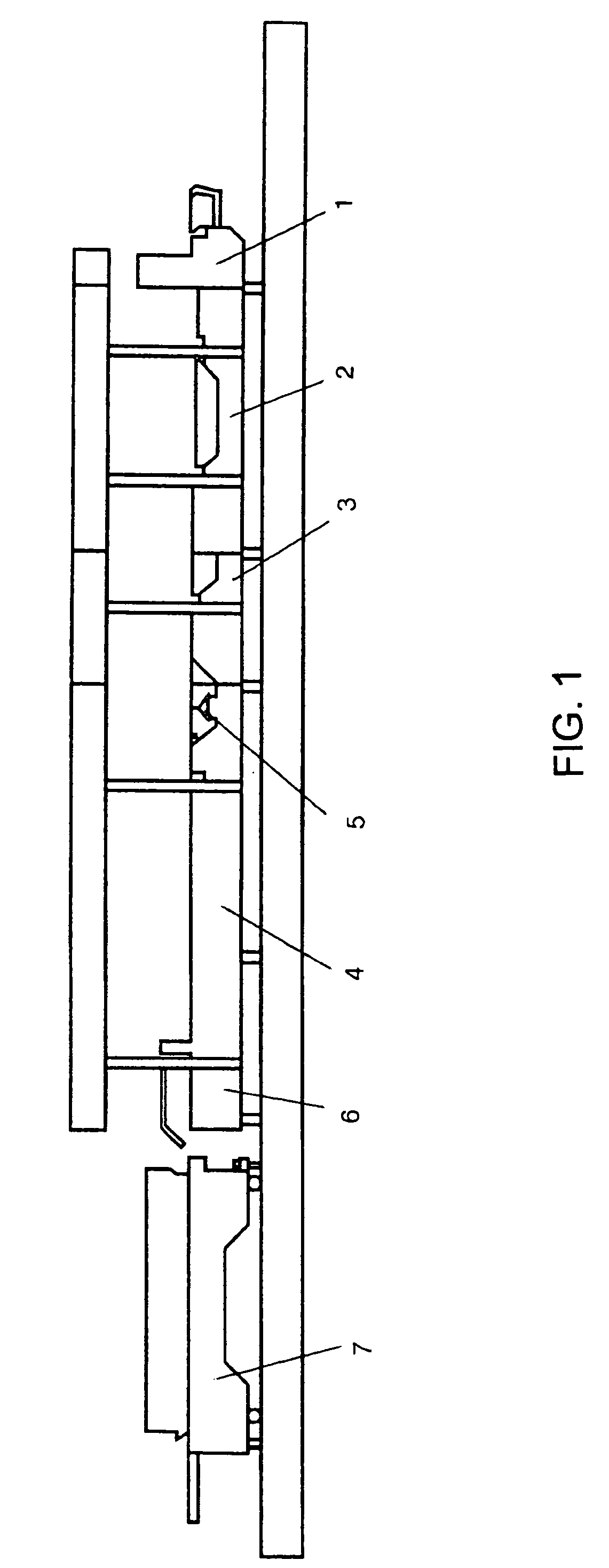Gathering and pressing device for a folded box-gluing machine
a box gluing machine and pressing device technology, applied in the field of gathering and pressing devices for folded box gluing machines, can solve the problems of short braking time and acceleration time, limited production speed, etc., and achieve the effect of increasing production speed and high quality
- Summary
- Abstract
- Description
- Claims
- Application Information
AI Technical Summary
Benefits of technology
Problems solved by technology
Method used
Image
Examples
Embodiment Construction
[0022] Referring now to the figures of the drawing in detail and first, particularly, to FIG. 1 thereof, there is shown in a conveying direction (from right to left), a folded box machine beginning with a feeder 1, which pulls the blanks to be processed out of a stack one after another at high speed and feeds them individually to the following processing station. The feeder 1 is followed, as next processing stations, by two pre-creasers 2, 3, which contain folding elements in order to fold folding flaps forward and back. As a result of being bent through 180°, the corresponding left-hand grooved lines of the blanks are made soft and supple.
[0023] The pre-creaser 3 is followed, as the next processing station, by the folding station 4, at the start of which an applicator 5 for adhesive, normally glue, is disposed. The adhesive applicator 5 contains glue nozzles or glue disks, by which the adhesive is applied to the blanks in the form of strips. The folding flaps of the blanks are the...
PUM
 Login to View More
Login to View More Abstract
Description
Claims
Application Information
 Login to View More
Login to View More - R&D Engineer
- R&D Manager
- IP Professional
- Industry Leading Data Capabilities
- Powerful AI technology
- Patent DNA Extraction
Browse by: Latest US Patents, China's latest patents, Technical Efficacy Thesaurus, Application Domain, Technology Topic, Popular Technical Reports.
© 2024 PatSnap. All rights reserved.Legal|Privacy policy|Modern Slavery Act Transparency Statement|Sitemap|About US| Contact US: help@patsnap.com










